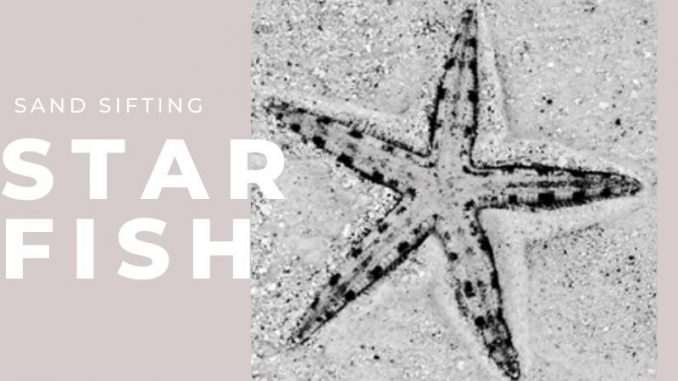
Sand Sifting Sea Stars are beautiful to look at and they are super useful, too. The best cleaners in the aquarium hobby, Sand Sifting Starfish, are omnivores that happily feed on the leftover food and detritus of a large reed tank or FOWLR (Fish Only with Live Rock) tank.
Sand Sifting Starfish are peaceful creatures that shine in established aquariums. One caveat is that if you are hoping to have a Sand Sifting Starfish join your community, you will have to have a tank that is at least 75 gallons, or your sea star will not have enough food to survive. Even if you supplement with other natural food sources, these eternally hungry echinoderms will not have enough to eat and will not thrive.
We’ll go over proper care for Sand Sifting Starfish, including what’s necessary to keep them alive and thriving as well as how they affect the biosphere in which they exist.
TABLE OF CONTENTS
Sand Sifting Starfish Facts & Overview
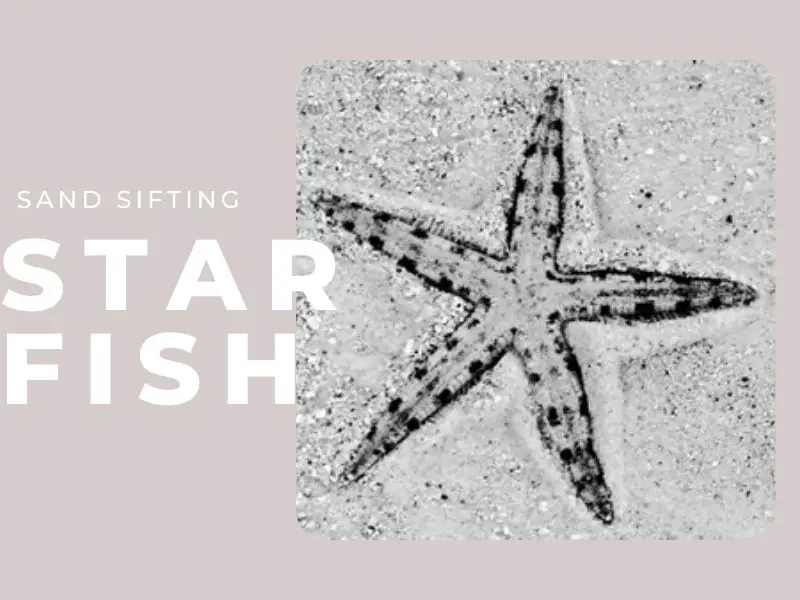
| Category | Rating |
| Care Level: | Easy |
| Temperament: | Peaceful |
| Color Form: | Tan/brown |
| Lifespan: | 3-5 years |
| Size: | 10 inches |
| Diet: | Omnivore |
| Family: | Astropectinidae |
| Minimum Tank Size: | 75 gallons |
| Tank Set-Up: | Saltwater (reef safe) |
| Compatibility: | Peaceful commnunity |
The Sand Sifting Sea Star, the scientific name Astropecten polyacanthus, is hugely popular in the aquarium hobby. Aquarists with saltwater tanks actively seek out Sand Sifting Starfish to keep their FOWLR and reef tanks healthy, clean, and safe. These sea stars are named for their work, which is sifting
sand. In saltwater tanks with a deep sand substrate, Sand Sifters sift through the sand for food, and in the process turn the sand bed over to prevent anaerobic bacteria and pockets of toxic gases from forming in the sand bed.
The one drawback of these merry maids is that their appetite often exceeds the food supply. The enthusiastic aquarist will have to have an established tank of at least 75 gallons in order to support enough small organisms to keep Sand Sifting Sea Stars satisfied. Sand Sifting Starfish also need stability in their water parameters.
Sand Sifting Starfish hail from the Indo-Pacific and the southeastern part of the Atlantic Ocean. They often live in rocky areas and sand beds.
Even though it’s a positive thing that these starfish are constantly cleaning, it is also true that they are actively and constantly disrupting the balance of live sand. Sand is part of an aquarium’s filtration system and offers an area for decomposition.
Because the starfish are constantly sifting, the sand cannot fulfill its purpose. Therefore, it’s vital to have a deep substrate that can handle the disruption of the sifting sand.
Typical Behavior
Sand Sifting Starfish are peaceful and easy habitants. However, don’t think that you can just let them loose on your tank and forget about them. When the detritus supply runs low, you will have to supplement their diet with small organisms like invertebrates and crustaceans
Appearance

The Sand Sifting Sea Star is quite lovely to look at, with tan and brown bands that alternate across its arms and body. The sea star’s arms are covered with thick spines.
Habitat and Tank Conditions
Sand Sifting Starfish thrive in either a reef tank or a FOWLR (Fish Only with Live Rock) aquascape. FOWLR setups are popular in the aquarium. Since some saltwater creatures are not reef safe, FOWLR tanks provide a safe alternative for reef unsafe inhabitants.
Live Rock refers to the previous condition of the rock. It is composed of a coral skeleton, and therefore, is referred to as live rock.
As I mentioned before, Sand Sifting Sea Stars require a deep sand bed that serves three purposes:
- It provides cover for the Sand Sifting Sea Star
- It provides a habitat for the organisms that they will eat
- It ensures that the sand will be able to withstand the constant movement of the substrate.
Sand is the required substrate, for the Sand Sifting Sea Star will, as it looks for food, loosen debris from the sand so that it can be eaten or filtered out.
One danger of a deep sand bed is that pockets of toxic gas can build up in the sand, endangering all aquarium residents. The sea star’s constant sifting releases the gas that can form and disrupts the development of the gas pockets.
Water Conditions
Sand Sifting Starfish, like other invertebrates, cannot handle drastic changes in oxygen levels, salinity, and pH. As with other starfish, you should use a drip acclimation for at least an hour before adding your starfish to the tank. And remember that you should never expose your starfish to air while you are
handling it, lest potentially fatal air bubbles enter their vascular system.
The optimal parameters for Sand Sifting Starfish are:
- pH levels: 8.1 to 8.4
- Water hardness: 8 to 12 dKH
- Water temperature: 72°F to 78°F (22.2-25.6°C)
What Size Aquarium Do They Need?
You’ll need a minimum of 75 gallons to properly house one Sand Sifting Sea Star. 75 gallons should produce enough food for the starfish and support the organisms it feeds on.
Tank Mates
Sand Sifting Starfish need peaceful and calm tank mates. They can be paired with peaceful fish, corals, and invertebrates that are peaceful to semi-aggressive.
Sand Sifting Sea Stars should be kept away from sharks, pufferfish, and triggers, as they are natural predators of these peaceful starfish.
Diet
Sand Sifting Sea Stars consume small invertebrates and other organisms that live in the sandy substrate of an established tank. You will also need to supplement their diets. Some of the things they will feast on are:
- Amphipods
- Bivalves
- Copepods
- Detritus
- Mollusks
- Shrimp
- Small crustaceans
- Small sea stars
- Urchins
- Worms
Care
Sand Sifting Starfish consume copious amounts of invertebrates and detritus, so they need a large enough tank to keep them satisfied. If the tank is not large enough, the sea star will run out of nutrients, burrow in the deep sand substrate, and starve.
The best thing you can do to care for them is to provide them with a large home that will satisfy their dietary needs. If you notice the food supply running low, you will have to supplement their diet.
These food needs are one reason you might choose to keep singles, as providing enough detritus and invertebrates for two sea stars would require a significant tank.
If your Sand Sifting Starfish does starve to death, the rest of your community will also be at risk from the explosion of ammonia and toxicity that the deceased starfish will release into the tank.
Finally, Sand Sifting Starfish should always be added to an established aquarium, as a new tank will be
too clean to handle their needs.
Breeding

Sand Sifting Starfish can not be bred in captivity. However, for informational purposes, here’s what happens in the wild: Sand Sifting Starfish do not mate.
They are broadcast spawners and when they are on the sand, they release sperm and eggs into the water. The sea star larvae live for up to a year feeding in the plankton.
Are Sand Sifting Starfish Suitable for your Aquarium?
As long as you have the space to keep them fed, Sand Sifting Sea Stars are a great addition to a FOWLR or reef aquascape, and as a bonus, they are reef safe.
Just keep in mind that they need a tank that is large enough to house the invertebrates and produce the amount of waste and detritus they need to consume
in order to survive.
They are built-in cleaners that will keep your tank sparkling, and they are peaceful creatures. Starfish are exceptionally exotic, and having one in your home saltwater aquarium is a great opportunity.
Do you think the idea of having a Sand Sifting Starfish in your community saltwater tank is a novel idea?
I’d love to hear your thoughts or experiences with these sea stars.

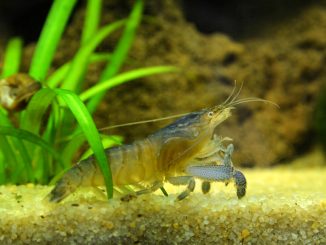
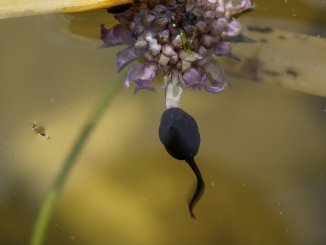
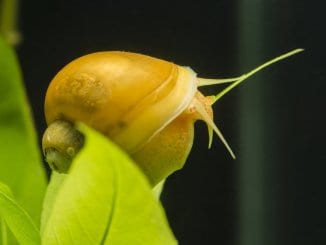
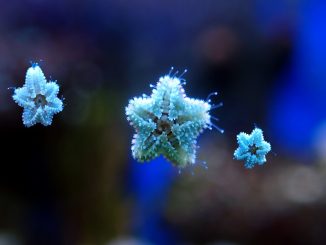
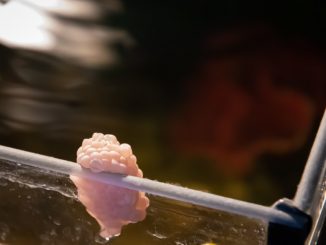
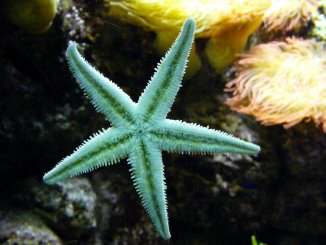
Is it unusual and should I be concerned when my sand sifting starfish travels on the glass of the aquarium.